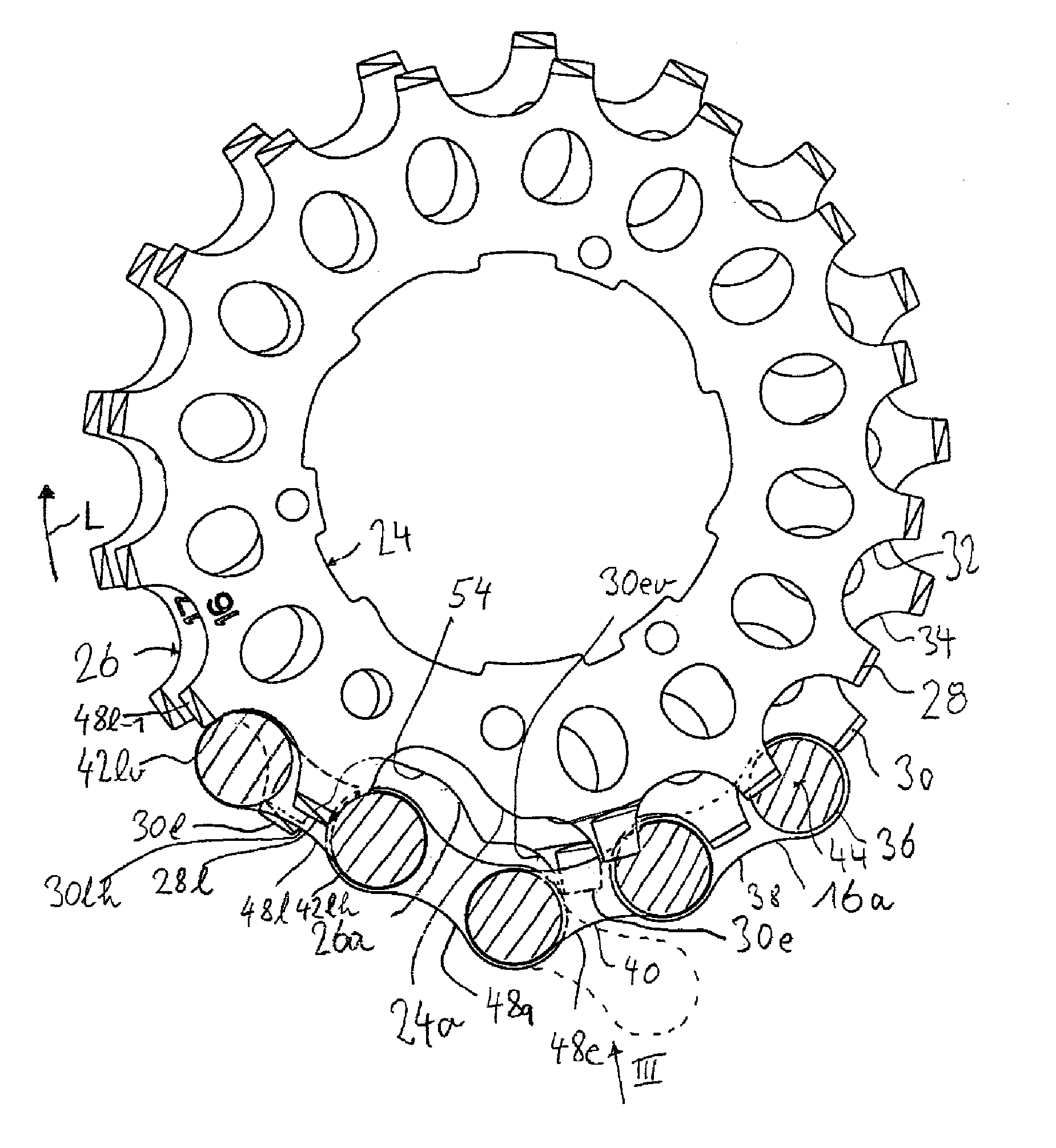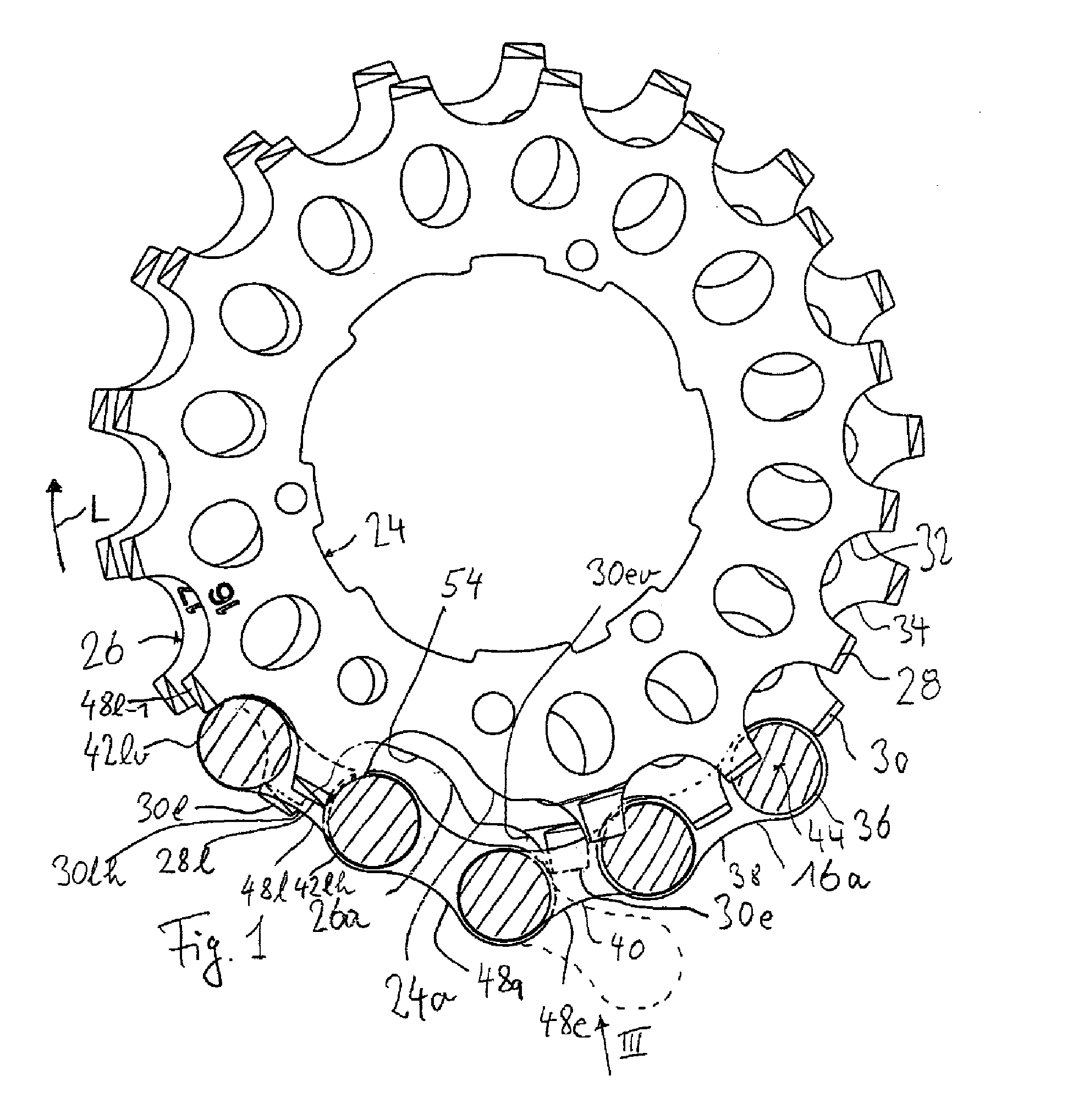Multi-Speed Sprocket Assembly
a multi-speed, sprocket technology, applied in the direction of hoisting equipment, belt/chain/gearing, portability lifting, etc., can solve the problems of extension of the crossing chain section, chain slides off the ramp and is displaced, and the solution is sensitive to dirt, so as to achieve the effect of not being sensitive to dir
- Summary
- Abstract
- Description
- Claims
- Application Information
AI Technical Summary
Benefits of technology
Problems solved by technology
Method used
Image
Examples
Embodiment Construction
[0032]FIGS. 1-4 illustrate a multi-speed sprocket assembly 18 for a bicycle shifting system according to one embodiment of the present invention. Looking to FIG. 10, the bicycle shifting system 10 generally include a front sprocket assembly 12 driven by pedals 14, a rear sprocket assembly 18 connected to a wheel hub (not shown) and a bicycle chain 16 connecting the front and rear sprocket assemblies 12, 18.
[0033]In the example shown, the front sprocket assembly 12 includes two sprockets; it is also generally possible to provide three sprockets. A front derailleur 20 is used to displace the chain from one sprocket to the other. Correspondingly, a rear derailleur 22 is also arranged behind the rear sprocket assembly 18. Each of the two derailleurs 20 and 22 is provided in the intake area of the chain 16 such that it is possible to shift the chain between the sprockets in the desired manner.
[0034]As described below with reference to FIGS. 1 to 9, the invention has to do with an improve...
PUM
 Login to View More
Login to View More Abstract
Description
Claims
Application Information
 Login to View More
Login to View More - R&D
- Intellectual Property
- Life Sciences
- Materials
- Tech Scout
- Unparalleled Data Quality
- Higher Quality Content
- 60% Fewer Hallucinations
Browse by: Latest US Patents, China's latest patents, Technical Efficacy Thesaurus, Application Domain, Technology Topic, Popular Technical Reports.
© 2025 PatSnap. All rights reserved.Legal|Privacy policy|Modern Slavery Act Transparency Statement|Sitemap|About US| Contact US: help@patsnap.com



